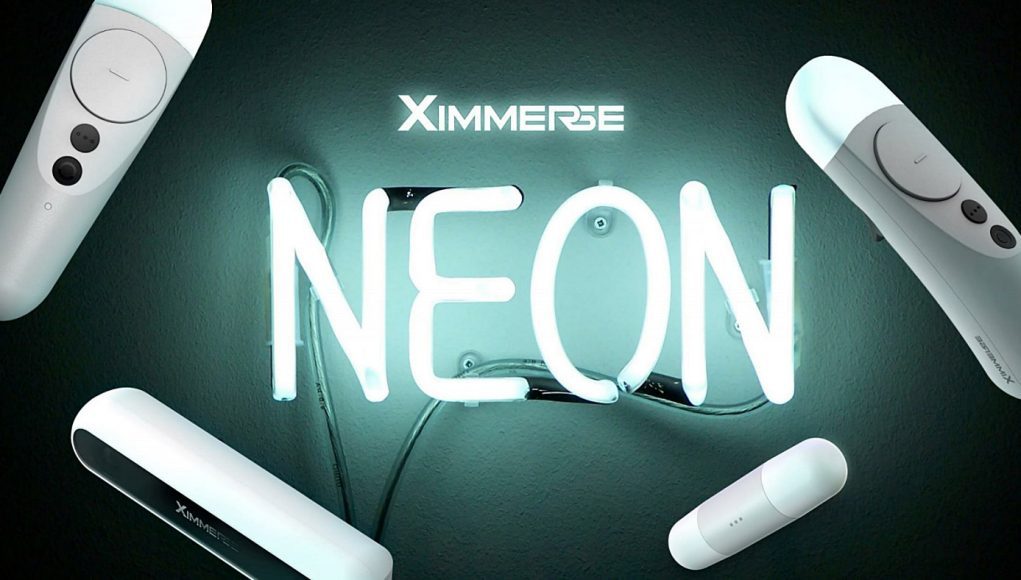HTC’s new mobile VR headset dubbed ‘Link’—which curiously does not fall under the company’s Vive brand—is also not making use of the same tracking systems employed by the Vive headsets. Instead the company has teamed up with Ximmerse, makers of the Neon tracking system.
While HTC’s Vive PC headset uses the outside-in SteamVR Tracking system (AKA Lighthouse), and the forthcoming Vive standalone Daydream headset will use Google’s inside-out WorldSense tracking, the new Link headset due to launch from HTC in Japan will use the outside-in ‘Neon’ tracking system, maker Ximmerse has confirmed to Road to VR.
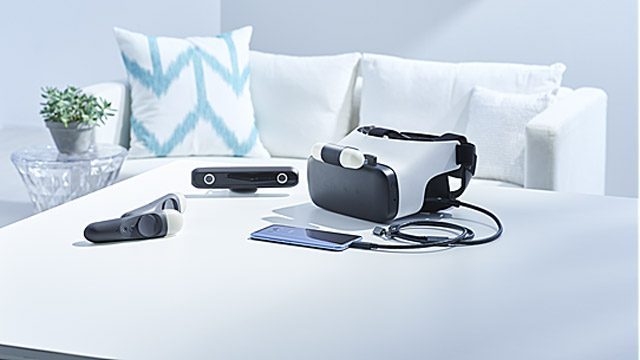
The Neon system uses visible-light optical tracking markers on the headset and on each controller which are seen as glowing orbs; the orbs are detected by a small external stereo camera. The tracking solution as a whole is quite similar to that of PlayStation VR.
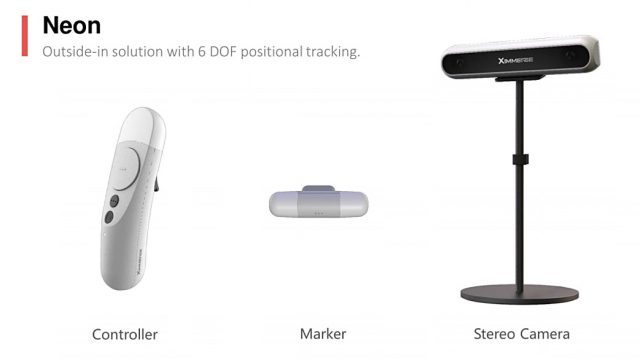
It’s a bit odd perhaps to pair an outside-in system with a mobile VR headset, since it requires an external sensor (which necessarily localizes an otherwise untethered VR headset), but it’s a low cost solution and an alternative to inside-out tracking which has only been robustly achieved by a handful of companies to date.
Ximmerse Neon Tracking Specs
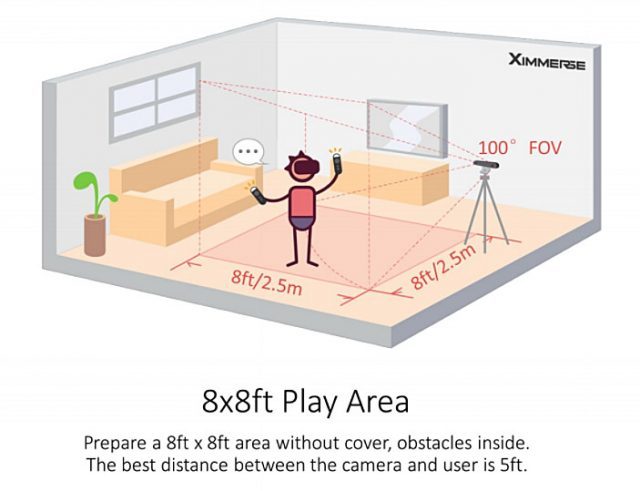
Ximmerse says their single-camera solution creates an eight by eight foot tracking space (which is necessarily front-facing due to the system’s need for line-of-sight). Although it’s an outside-in solution, it has one huge advantage: controllers. To date we haven’t seen a robust solution for controllers used with an inside-out tracking system.
Although headsets like Gear VR and Daydream View—which only offer rotational tracking—have controllers, they are basic rotation-only devices that work best for gesture-based input rather than true motion input.
Neon, on the other hand, offers positional (AKA 6DOF) tracking for both the headset and the controllers. Positionally-tracked controllers are far more compelling for VR input because of their ability to be tracked through 3D space, opening the door to more complex VR gameplay.
Ximmerse says the Neon controllers last 40 hours with two AAA batteries.
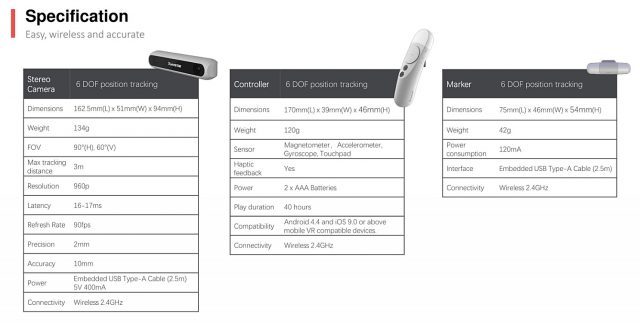
Ximmerse says the foundation of the Neon tracking system, the stereo camera, has a 960p resolution and operates at 90Hz. The company claims precision (jitter) of 2mm and accuracy (location relative to actual position) of 10mm. Latency is claimed at 16-17ms.
As you would imagine, the controllers have their own sensors on board—the usual trio of magnetometer, accelerometer, and gyroscope—which have are sure to have a much higher update rate, but rely on the camera’s 90Hz tracking data for drift correction.
All components of the Neon tracking system connect together via 2.4GHz wireless to get the necessary information to the phone for the tracking and input data to be processed.
Brief Prototype Hands-on
We’ve actually gone hands-on with a prototype version of the Neon tracking system, back at CES 2017 in January. Though I only spent 10 minutes or so with it, I was impressed with the quality of tracking.
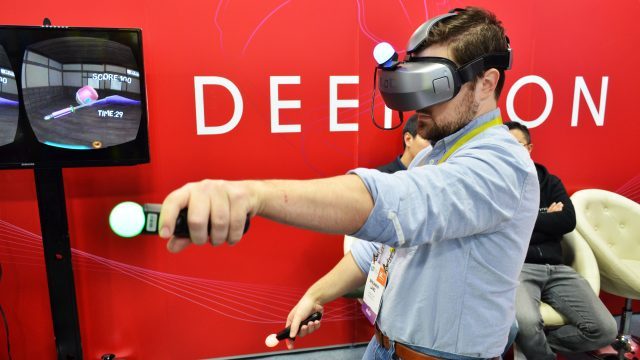
Attached to a DeePoon headset, I played a Fruit Ninja-like game where I used the two controllers to chop fruit as it popped up in front of me. The system offered latency and accuracy that felt at least as good as that of PlayStation VR. And while PSVR has the lowest quality tracking of the three big tethered headsets, it’s good enough to have not prevented the PSVR from becoming the best selling of those three headsets so far—which goes to show that ‘not perfect but good enough’ tracking can be quite potent.

